Blue Planet II
Season 1
s01e01 / One Ocean
29th Oct '17 - 8:00pm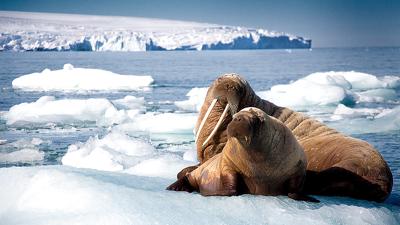
New worlds and animal behaviours are uncovered on a journey from the equator to the poles.
s01e02 / The Deep
5th Nov '17 - 8:00pm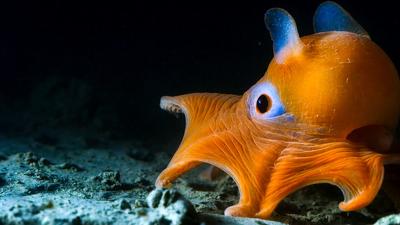
The deep is perhaps the most hostile environment on earth, at least to us - a world of crushing pressure, brutal cold and utter darkness. We have barely begun to explore it, and yet it is the largest living space on the planet. Scientists already think that there is more life in the deep than anywhere else on earth.
This episode takes us on an epic journey into the unknown, a realm that feels almost like science fiction. We discover alien worlds, bizarre creatures and extraordinary new behaviours never seen before. We encounter savage hordes of Humboldt squid hunting lanternfish in the depths and coral gardens flourishing in absolute darkness, with more species of coral to be found in the deep than on shallow tropical reefs.
On the desert wastes of the abyss, a whale carcass generates a frenzy as slow-moving sharks as big as great whites fight for what may be their first meal in a year. Food is hard to come by and finding a mate is even harder, but life adapts in ingenious ways. There are fish that walk instead of swim, worms that feed exclusively on bones and shrimps that spend almost their entire lives imprisoned with their mate in a cage of crystal sponge.
The deeper you go, the more extreme conditions become. The sheer weight of water above creates almost unendurable pressures. Yet even eight kilometres down, where the basic chemistry of life was once thought impossible, we find strange species swimming through the darkness. From here we journey on down to the deepest place on earth - the Mariana Trench - almost 11 kilometres from the surface, a vast chasm that ruptures the deep sea floor. Only three human beings have ever reached here, and yet there is still life to be found in these deep sea trenches.
The deep can be a unhappy place. Tectonic plates rip apart or collide in mighty clashes. And at these volcanic hotspots, extraordinary micro-worlds blossom into life, completely divorced from the energy of the sun. Hair-covered crabs feed on gushing plumes of otherwise toxic hydrogen sulphide. Shrimps hover on the fringes of billowing clouds of volcanic chemicals, so hot they could melt lead. We discover new species every time we visit these strange new worlds.
One of these geysers might even hold the secret to all life on earth. At a hydrothermal vent system in the middle of the Atlantic, seawater and rock react under extreme pressures and temperatures to produce complex hydrocarbons - the building blocks of life itself. Scientists have named this strange place the Lost City, and many believe that it was at a place just like this that life on earth first began, four billion years ago.
s01e03 / Coral Reefs
12th Nov '17 - 8:00pm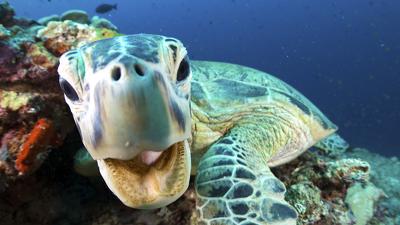
Coral reefs are home to a quarter of all marine species. Survival in these undersea mega-cities is a challenge with many different solutions. A turtle heads to the reef's equivalent of a health spa - but she must use trickery to avoid the queue. A remarkable Grouper uses the fish equivalent of sign language to collaborate with an octopus, flushing their prey out of hiding holes. A metre-long, ferocious-jawed Bobbit Worm hides in its tunnel. Monocle Bream retaliate by squirting water to expose its sandy lair.
s01e04 / Big Blue
19th Nov '17 - 8:00pm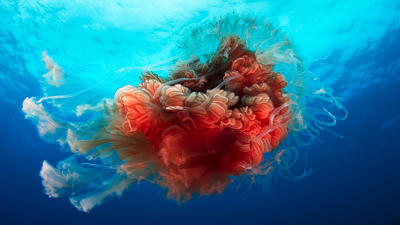
This episode reveals what it takes to survive in the savage and forbidding world of the big blue, the world's greatest wilderness. We witness feats of incredible endurance, moments of high drama and extraordinary acts of heart-wrenching self-sacrifice.
s01e05 / Green Seas
26th Nov '17 - 8:00pm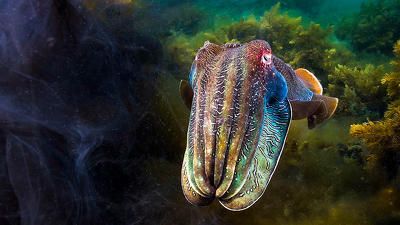
It's our green seas, not the blue, that bring life to our oceans. Here sunlight powers the growth of enchanted forests of kelp, mangroves and prairies of sea grass. They are the most abundant but fiercely competitive places in the ocean to live.
s01e06 / Coasts
3rd Dec '17 - 8:00pm
On the coast, two worlds collide. Coasts are the most dynamic and challenging habitats in the ocean - that brings great rewards but also great danger. The extraordinary animals that live here must find ingenious ways to cope with two very different worlds.
s01e07 / Our Blue Planet
10th Dec '17 - 8:00pm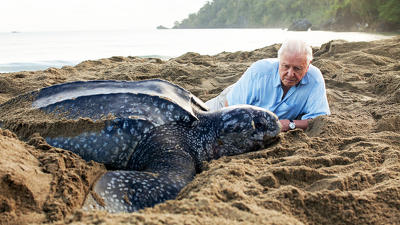
Uncover the impact that our modern lives are having on our best-loved characters from across the series, including devoted albatross parents unwittingly feeding their chicks discarded plastic and mother dolphins potentially exposing their newborn calves to pollutants through their contaminated milk.